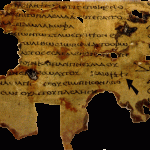
From time to time, I read mocking comments about the “Early Modern English” hypothesis regarding the language of the Book of Mormon that’s associated with Royal Skousen and Stanford Carmack. Much merriment ensues, as the critics vie with one another in denigrating the idea as crazy, desperate, stupid, and so forth.
Typically, those making the derisive remarks also make comments strongly suggesting that they don’t really have the slightest clue what the proposal is about. In fact, I would be pleasantly surprised if one vocal critic on the topic in ten is actually familiar, at first hand, with what Drs. Skousen and Carmack have argued. I’ve never seen any indication that a single one of them can accurately describe it or cares to do so.
Fortunately, most discussions (thus far) of the “Early Modern English” hypothesis by the two principal scholars who’ve been laying out it are easily accessible, at no charge, through the Interpreter Foundation:
It’s very much a data-driven hypothesis, as surprising and unexpected to Dr. Skousen and Dr. Carmack as it has been to the rest of us. Actually looking at their work demonstrates that in spades. I think I can speak for both of them in saying that they would appreciate intelligent critical responses, informed feedback, on their argument. Unfortunately, though, ignorant smirking and sneering, uninformed derision aren’t particularly helpful.
There’s really no excuse, under the circumstances, for ignorantly mischaracterizing what these two highly trained linguists and scholars have had to say.










